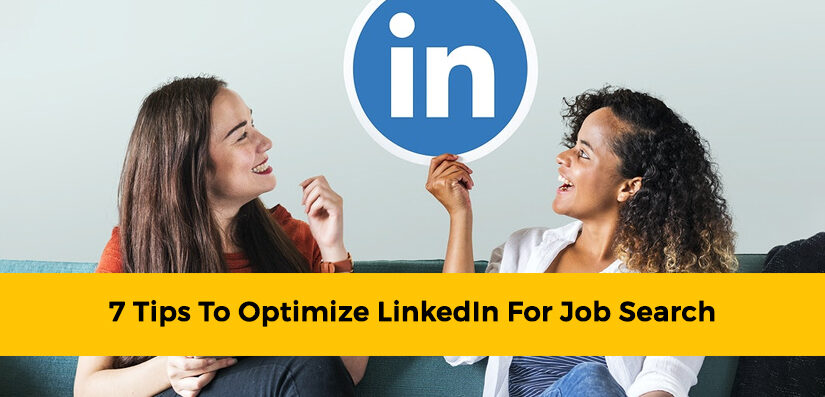7 Tips to Optimize LinkedIn for Job Search
From a business perspective, LinkedIn is a social network that has been specifically designed for companies and job-seekers. As of 2019, the company comprises of 728 million members in more than 200 countries. To optimize LinkedIn for job search is essential for job seekers to get the desired interview call. Linkedin functions like an online resume where they are able to showcase your individual skills and find new job opportunities and can also connect with prospective clients. However, several job seekers are not able to maximize LinkedIn to find their jobs. In this article, we will provide you eight tips to effectively optimize LinkedIn for job search into your profile.
1. Add Keywords to your profile
To optimize LinkedIn for job search It is essential to add keywords to your LinkedIn profile. This would help companies and potential recruiters to find you. Moreover, focus on specific keywords that can match your skill sets. If you are stumped on keywords to include, there are various keyword tools that could be used effectively. Some of these tools include SEMRush, SEM Google Trends and KeywordSpy.
2. Ask for professional recommendations
From aspiring professionals, LinkedIn recommendations could be regarded as public testimonials that can validate your character, ability and work history. Such recommendations are usually made by other professionals on the network. As a result, you must have a strategic approach regarding when and who to ask. You should be ready to provide recommendations for others. This is a beneficial approach to optimize Linkedin for job search and improve your job search prospects. You can seek help from individuals who know your work well and can also speak to the particular value you provide.
3. Follow companies that provide your dream Job
On LinkedIn, you can receive updates on a regular basis regarding the different news and trends that are related to hiring. You should follow the brands you aspire to work for and also note the manner for optimizing Linkedin to share about their business. Such a plethora of data could be drawn upon when writing a cover letter to an organization or meeting with organizational leadership during the process of interview.
4. Set up a LinkedIn vanity URL
LinkedIn helps you to customize your profile URL for the purpose of professional sharing on resumes or any other job material. Such vanity URLs could well be customized to include your first and last name. This is an option that could be highly professional. They are also easier to share than a string of numbers and letters. From an SEO perspective, having a LinkedIn URL with your full name could help to make your profile very easier to find online. This also helps your process of job search.
5. Trading professional endorsements
Endorsements could help in making credibility for recommendations. However, they require less detail. This is because a LinkedIn professional can help to endorse another with a single click. Other professionals could help to endorse you for improving individual skills. However, it’s your job to add the list of skills to your individual profile for people to view. If you seek out colleagues to endorse, your personal endorsements will arrive in due time. This is an ideal approach to optimize Linkedin for job search.
6. Remove outdated information from your experience section
You should not include irrelevant or out-dated jobs on your LinkedIn profile. If you want to format your profile in a manner that requires the attention to skills, jobs and recommendations that speak to your personal ambitions for the near future. Having a relevant and concise resume is much better than having irrelevant experience. The same could be stated for creating as well as maintaining and LinkedIn profile. It is important that you should scale back the overall amount of space that's dedicated to professional experiences that have a limited contribution to the role that you are seeking currently. For potential employers, gaps in work history could illustrate a red flag.
7. Join relevant groups and contribute frequently
As a professional, you can join different groups on LinkedIn in a wide range of interests and fields. These groups could vary on inclusivity, privacy and other settings. However, they all function for bringing professionals together. It is essential to make the most out of different groups. This means adding unique content. It could be either in form of relevant references and news or contributing towards your own analysis. You should never spam such groups with links to your website or brag on-record regarding your different skills. Contributing to ongoing conversations in groups that are industry-aligned would help you to learn about your colleagues and competition, build expertise and position as a productive individual.




